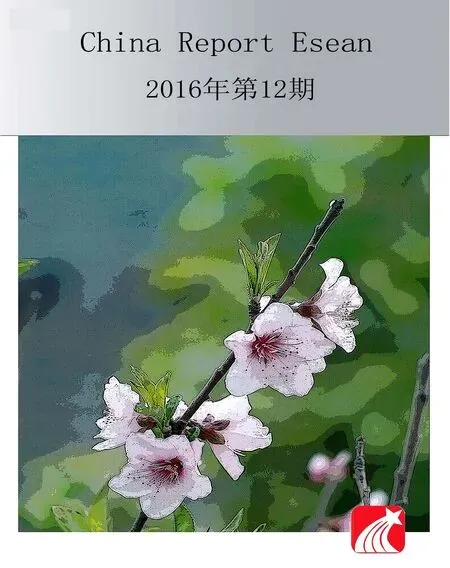Let It Sparkle Jewelry producers look to e-commerce for growth
By Wang Jiping
Let It Sparkle Jewelry producers look to e-commerce for growth
By Wang Jiping
As the purchasing power of China’s consumers in their 20s and 30s is rising, the jewelry industry is changing. Young consumers like Yang look for jewelry with emotional connotation.
Since ancient times, jewelry has served as a social status symbol and an expression of identity for people from different backgrounds. Today, high-tech machines, increasingly convenient and fast transportation, logistics and information systems help jewelry producers reach their customers more quickly and ef f ectively. Chinese jewelry is moving along with this global trend, modernizing and reaching a new consumer base.
Improving Design
Yang Xue, part of China’s increasingly important cohort of consumers born in the 1980s, attended the 2016 China International Jewelry Fair in Beijing this November. Yang planned to purchase a golden bracelet in traditional Chinese style to give to her mother for her birthday, a jade pendant for her young cousin and a silver necklace for herself, to match her new dark coat.
As the purchasing power of China’s consumers in their 20s and 30s is rising, the jewelry industry is changing. Young consumers like Yang look for jewelry with emotional connotation.
Lao Xiaoying, a provincial manager at the Mingr Jewelry Company based in Zhejiang Province, said that choosing the right materials and developing new designs using the latest technology are vital.
Over the course of the next 10 years, the Chinese jewelry market is expected to grow by 15 to 30 percent each year, indicating strong industry potential.
However, competition remains fierce. Lao said her company updates products every season, while also promoting a series of products with dif f erent themes inspired by cultural elements.
“Releasing new editions of our products each year increases our visibility and consumer familiarity with our company,” Lao said.
Lao added that due to prohibitive costs, regularly adding new materials to different types of jewelry is impractical. Therefore, her company mixes up existing materials into a variety of combinations, with variations in color and types of jewels.
Apart from appealing design, consumers care about quality. Using the right materials is key, explained a staff member at the Wuhan Yufulai Jade Jewelry Company. For example, many Chinese consumers are interested in jade jewelry, which is bright in color. Because of this trend, Yufulai imports jade from Myanmar, which is known for its bright color.
Zhan Jinxia, general director of the Guangzhou Wanda Jade Jewelry Company, said her company has long focused on nephrite, a different type of jade. However, in recent years, due to increased demand for bright jade, Zhan’s company has also begun importing jade specific to Myanmar —thanks to its brightness — as well as emerald from Thailand.

A pair of jade bracelets on display at the 2016 China International Jewelry Fair held in Beijing in November 2016.
E-commerce Strategy
In light of rapid industry growth, Chinese jewelry producers are aiming at market expansion.
Cooperating with ASEAN countries such as Myanmar, Thailand and Cambodia, Chinese jewelry producers are stepping up their efforts to go global. In particular, small and medium-sized enterprises are developing e-commerce platforms of their own by cooperating with online jewelry sales platforms such as Suyibao, part of the Shenzhen Zuanming Internet Operations Company.
Suyibao is similar to Taobao, Alibaba’s largest e-commerce platform, in the sense that producers and dealers of jewelry can open stores on the site. After opening a store, they can conveniently access data related to consumer behaviour and industry trends.
“These days, businesses across nearly every industry are looking for ways to enlarge market share by using e-commerce,” explained Zhou Meijuan, a Suyibao operations specialist. “This is a new theme of consumption in the 21st century.”
Mo Daiqing, a senior analyst at the China E-business Research Center, toldChina Report ASEANthat the key to pursuing sustainable growth is to pay close attention to recent trends. Therefore, e-commerce is vital to all jewelry producers.
Prominent Chinese jewelry dealers such as Hong Kong-based Chow Tai Fook have begun to focus on importing jade from Myanmar, and many such products are now sold on its e-commerce platform. However, due to the fact that jewelry tends to be expensive and customers are very particular when it comes to the type of jewelry they like, customers want to see the physical product or even try it on before buying. This presents difficulties in regards to e-commerce solutions in this industry.
Some firms are using high-tech gadgets to solve this problem.
“Chow Sang Sang Jewelry has begun promoting two of its top product lines via Virtual Reality technology,” Mo said.
The future of e-commerce in the jewelry industry is bright, Mo added. Jewelry producers and distributors alike feel optimistic about growth.
- China Report Asean的其它文章
- Should We Stay or Should We Go? What multinationals should look for as they decide to keep production in China or move it to ASEAN countries
- Tourism Set to Drive Indonesia’s Economy Forward
- Brunei Envoy Pays Tribute To the King of Boni
- Lost in Vietnam: A Co-Production Love Comedy
- Cycling in Hainan A New Avenue For Tourism
- Bambang Susantono: Infrastructure Development Requires Efforts From All Sides

